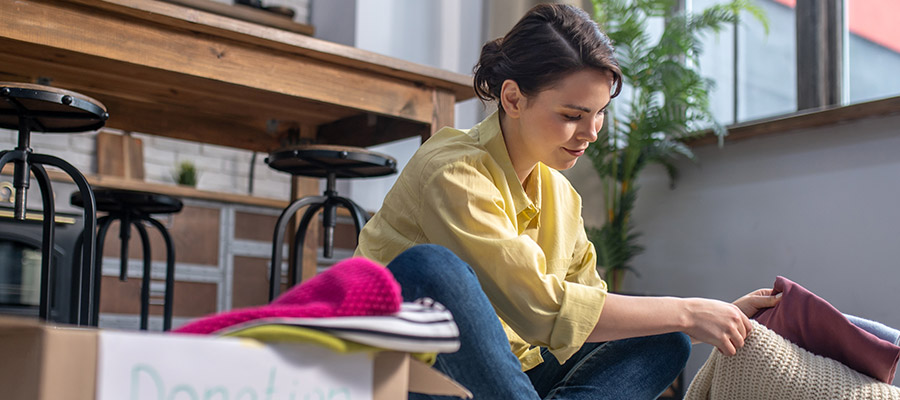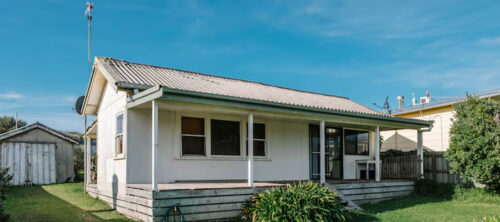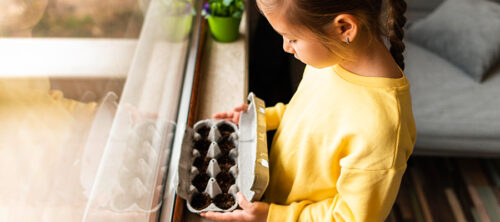Decluttering your home isn’t easy. But Natalie Schrier, a professional organizer and owner of NYC-based Cut The Clutter, started her business more than seven years ago to help people accomplish just that. Her mission is to bring order into the lives of people who don’t have the time to do so themselves, don’t know how to, or are just completely overwhelmed by the thought.
If you fall into any of those categories, you’re not alone. In fact, I fit into all three. So I asked Natalie to share some of her best organization tips for decluttering your home once and for all.
She started with the caveat that there is no “typical” client. While she was ready to give me a few general rules of thumb to go by, she made sure to point out that organizing is a very personalized, custom experience. So, while you’ll find a foundation here, feel free to — and actually be sure to — tailor these tips to make sense for your home, life, and style.
9 Decluttering and Organizing Tips for Your Home
1. Declutter Your Home Like a Pro: Decluttering Tips for Getting Rid of Unwanted Items
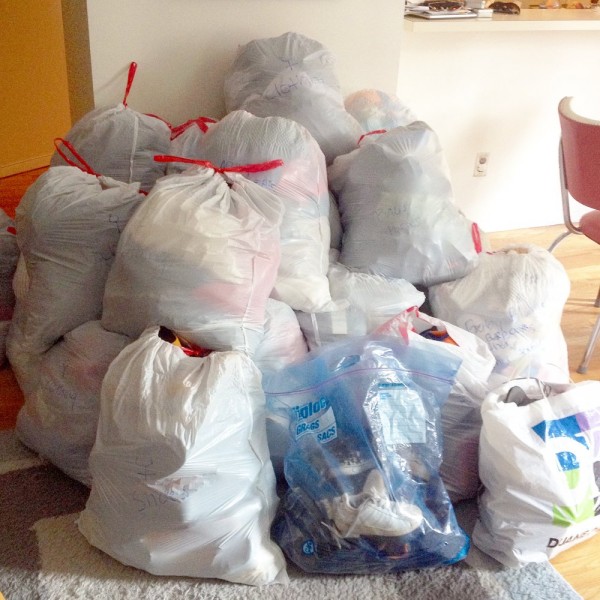
The word that Natalie said most during our conversation was … PURGE. She wants you to permanently get rid of items that no longer serve a purpose. It’s the essential first step in organizing any space, as it cuts down on items that then need to be stored.
Quite simply, it’s best not to allocate space for your items until you know exactly how many you’re putting away. For instance, once you’ve purged your old spices, assess the ones you still have and see where they fit best in your kitchen.
Clothing that is too small or too large can and should be donated. Items that one day are filled with sentiment (like my daughter’s daily scribbles) can the next day be put in the trash (just don’t let her see!). Purging regularly is Natalie’s key to ensuring minimal buildup of unnecessary items.
Like Mary Helen Rowell who lives happily in a 90-square-foot apartment, Natalie recommends following the “one in, one out” rule: If you buy a new product, get rid of an old version you have, making the number of items you own stay constant. This applies to clothes, shoes, jewelry, kitchen appliances, and pretty much everything else in your home, including tech gadgets.
Interestingly, while technology has helped us streamline many things, Natalie credits it with making purging harder due to constant upgrades of products that come with wires, chargers, and more.
Some of her clients are hesitant to part with these accessories, and most have a box or drawer full of so many cables that they don’t even know which product they came with in the first place.
Labeling wires prior to storage can help solve the anonymous tech clutter. This way when you upgrade, you can also easily locate the right parts that go with the item you are getting rid of, thanks to your newly-implemented “one in, one out” rule!
Learn more: 21 Outdoor Shed Organization & Storage Ideas to Help You Declutter
2. Set a few guidelines.
If you’re unsure about what to keep and what to let go of, consider setting a few simple guidelines to help you decide. For instance, you might choose to discard anything you haven’t used in the past year or donate clothes you haven’t worn in the last six months. These rules can be personal, but staying consistent with them makes the process easier. Before long, you’ll likely notice a more organized home—and a clearer mind.
3. Keep items in the same category in one place.
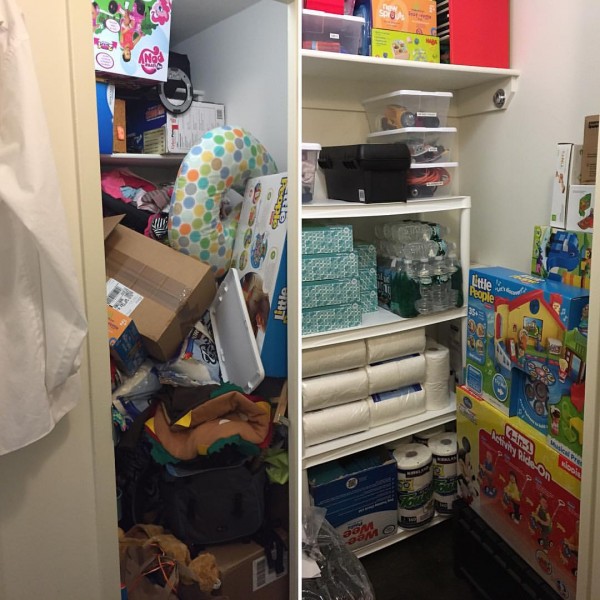
When deciding where your things should live, always put categories of items in one place, keeping all like items all together.
A recent client of Natalie’s had wine glasses in four different cabinets, so she knows firsthand that this doesn’t come naturally to some people. But without everything being grouped, it’s impossible to know what you own, which is the first step in being able to tame it all.
4. Put things back where they belong.
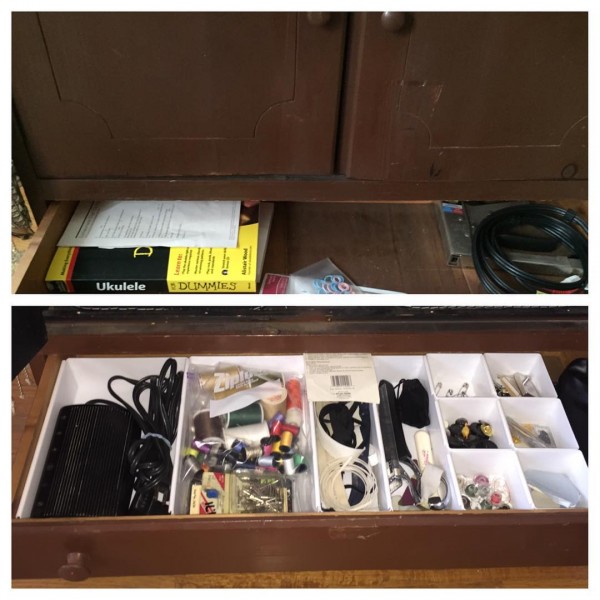
If you take out your flat iron, a roll of tape, or your corkscrew, put it back in the same place when you’re done. While this sounds like common sense that our parents always reminded us to do as kids, I know I often leave things out on surfaces. Or in other rooms for the sake of ease, constantly creating mess.
Natalie says that the consistency of putting things back where you got them creates good patterns, helping lead to overall better organizational behavior. A good rule here is to never leave a room empty-handed. Find something to put back in its rightful place whenever you’re on the move.
5. Don’t buy storage solutions until after you purge and assess your belongings.
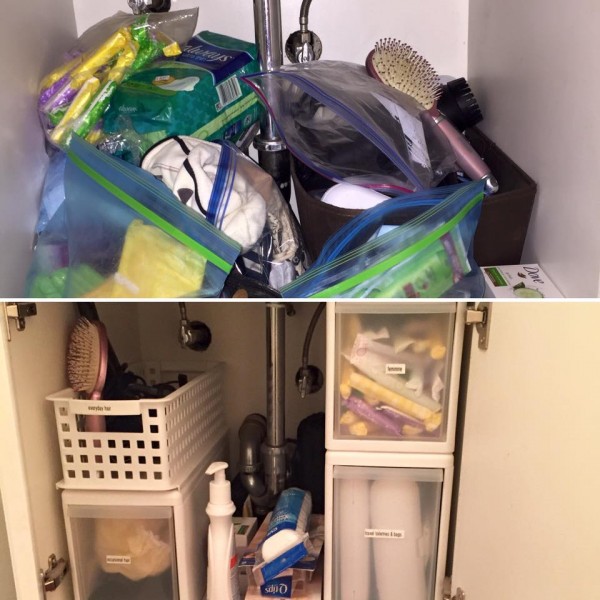
Natalie says that a big mistake people often make is preemptively purchasing storage solutions to contain or organize their possessions. This is backward, as you don’t know what you’ll store until after you purge the things you don’t need and assess what’s left.
Then, and only then, is it time to decide what type of storage container or organizing product will best serve your needs. This will help you avoid purchasing a large plastic bin to store all of your mementos from your last boyfriend. What you really should do is get rid of that stuff anyway, or at least whittle it down to a small shoebox-sized container.
6. Store infrequently used items out of your way.
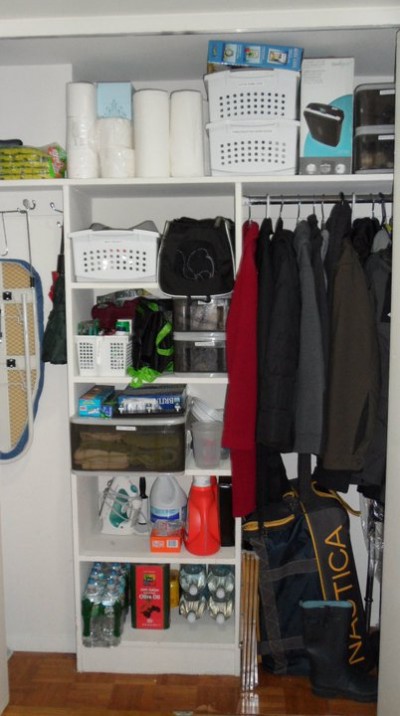
Another simple-but-highly-effective organizing tip: Store infrequently used items out of your way, and make the items you use most frequently more easily accessible.
So if you have holiday decorations, out-of-season clothing, a bike, and extra art supplies that you don’t use right now, store them in Clutter.
And instead of putting cleaning supplies up on the top shelf of your linen closet, where you need a step stool to reach them, keep a small broom and dustpan, all-purpose cleanser, and some paper towels and toilet paper rolls right under the sink, where you’re able to grab them as soon as they’re needed.
As we wrapped up our chat, I asked Natalie specifically for one organizing tip for the kitchen and one for our least favorite place to clean (the bathroom):
7. Make being organized easy for yourself.
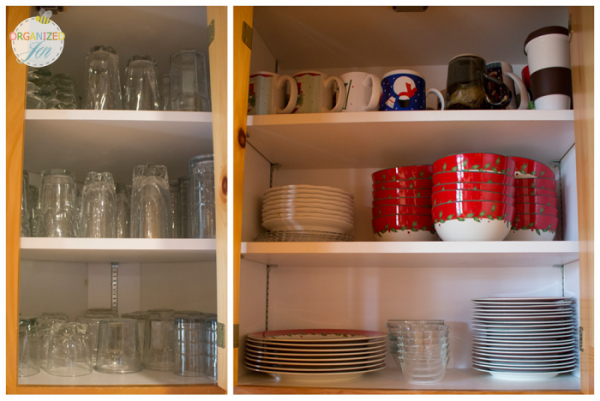
Store your most often-used plates and glasses in the cabinet closest to the sink or dishwasher, because that makes it so much easier to put them away after washing. Granted here in New York City none of us have such spacious kitchens that anything is too far of a reach, but still, not having to do an awkward yoga pose to put away your daily dishes definitely makes sense.
Learn more: How Technology Can Help You Declutter Paperwork and Stay Organized
8. Declutter your medicine cabinet.
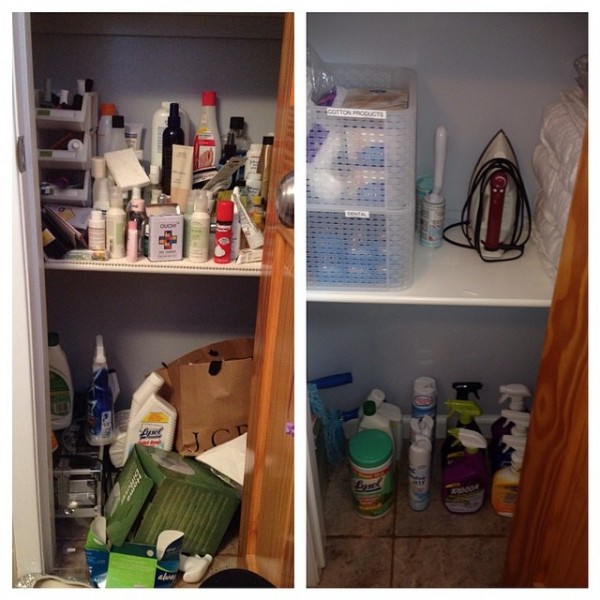
Our buzzword “purge” came up again here, as everyone should sort through their vanity and medicine cabinet
a couple of times per year. Then you can dispose of expired items or the products that you no longer use.
9. Store bathroom, grooming, and cleaning supplies in a shoe organizer.
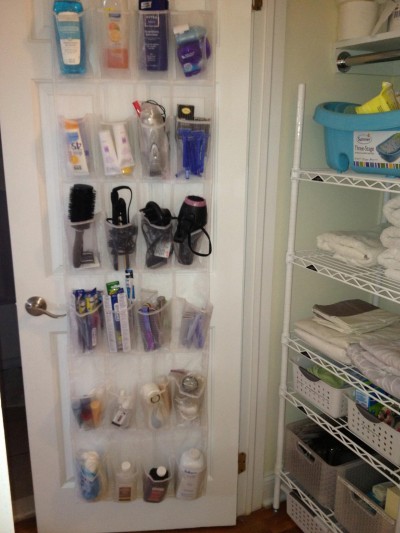
If you want more space in your bathroom (and hey, who in NYC doesn’t?), hang an over-the-door shoe organizer with clear pockets on the back of your bathroom door or linen closet door. These are great for storing just about anything, including your toiletries, flat irons, brushes, cleaning supplies, and hair dryer.
5 Dos: How to Declutter Your Home Successfully
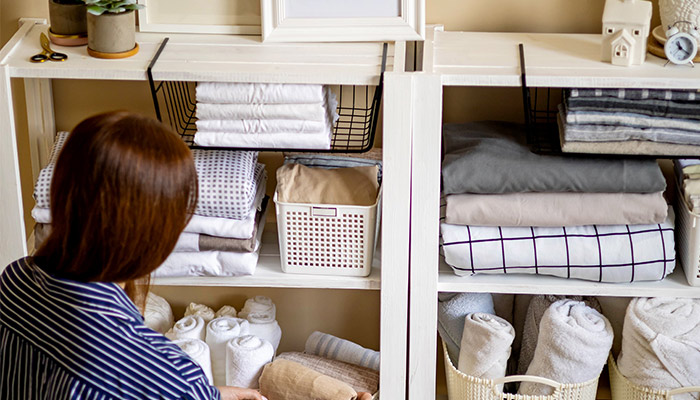
- Create a Clear Declutter Plan: Start step by step, make a proper plan for decluttering your home, that will help you stay focused and productive.
- Declutter One Room at a Time: Break down your home decluttering into manageable tasks by focusing on individual rooms or spaces.
- Sort Items Into Categories: Make sure you group your items into categories like keep, donate, and trash to easily declutter and organize.
- Declutter Your Home Regularly: Keep clutter under control by scheduling routine decluttering sessions to maintain organization.
- Ask yourself these Questions: What should I get rid of?
- What should I throw away?
- What should I give away?
- What should I keep?
- Where should I put it?
5 Don’ts: Common Mistakes When Decluttering
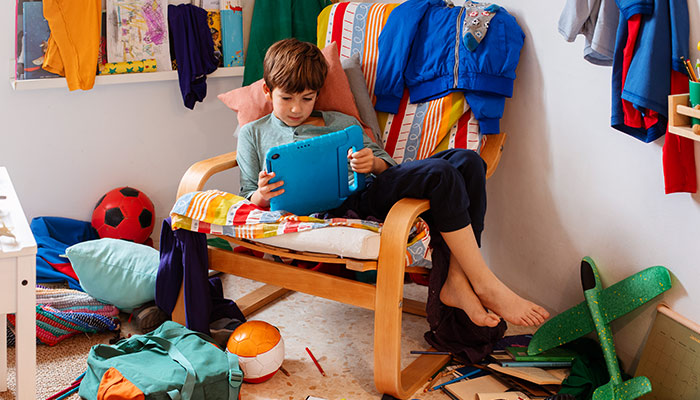
- Don’t Declutter Everything at Once: Avoid adopting an overly ambitious approach; instead, pace yourself to prevent burnout. The best way to declutter your home is by pacing yourself over several days or weekends.
- Don’t Keep Items “Just in Case”: Holding onto rarely-used items creates unnecessary clutter. Be realistic about what you genuinely need.
- Don’t Neglect Setting Limits: Maintain boundaries for your belongings that clearly define what stays to avoid future clutter buildup.
- Don’t Ignore Your Personal Style: Set clear boundaries for the number of items you keep to prevent clutter from piling up again. Decide what’s essential and stick to those limits to maintain a tidy, organized home.
- Don’t Hold onto Emotional Clutter: Keeping emotional clutter around will just clog up your space. Letting go creates room for positivity and fresh experiences.
Benefits of Decluttering Your Home
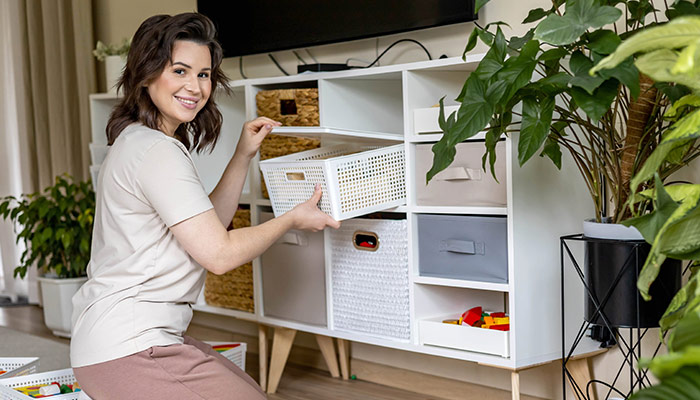
1. Less Stress
When you come home from a long, hectic day, the last thing you want to deal with is a mess. In fact, when you’re drained from the day, a small pile of clothes can turn into a big trigger. Keeping a tidy, organized space doesn’t just help you keep your things in order, it also creates a positive environment where you can unwind. Utilize practical decluttering strategies such as focusing on one room at a time or developing a clear action plan. Think of it as a blank slate to reset your state of mind after being “on” and stimulated all day.
2. Enhance Your Productivity Through Decluttering
Living in a cluttered space can seriously throw off your vibe and make it tough to focus on anything productive. Take charge and be your own boss for a day or two, follow the decluttering tips above to tackle that mess around you, and get your space back on track. Once you’ve done a solid decluttering, make it a regular habit to organize your stuff. You may be pleasantly surprised by the increase in both productivity and relaxation when your space isn’t stressing you out.
Learn more: How to Teach Kids to Declutter: Easy Tips for Parent
3. Your Place Feels Bigger and Better
Realistically, storage space is limited for most households. Frequent home decluttering makes your living space feel spacious and way more useful. Experiment with practical decluttering ideas, such as discarding duplicate kitchen appliances or donating old clothes. Suddenly, your modest apartment can feel significantly more spacious and functional.
4. Save Your Time and Your Cash
Owning duplicates or frequently misplacing items can be frustrating and costly. When you discover the optimal method of decluttering home areas, your belongings become easy to find. Declutter your home using easy steps and have the important things at your fingertips. It will ultimately benefit both your finances and peace of mind.
5. Feel Happier and More Energized
Clearing clutter isn’t just about tidying up, it’s a quick mood lifter. Remove outdated items and emotionally burdensome possessions, and you’ll instantly feel lighter. When you declutter your home, you’re reclaiming your space, boosting your self-esteem, and giving yourself a fresh start. It’s a simple way to elevate your mood and improve your environment.
How to Declutter Your Home Room by Room
In this detailed room-by-room guide, we’ll walk through steps to declutter your home from the bathroom to the living room (with plenty of decluttering tips along the way). We’ll tackle common challenges – from overflowing junk drawers to sentimental clutter. –. Whether you’re gearing up for a big spring weekend purge or chipping away a few minutes each day, this timeline will help you declutter and organize every space in your house like a pro.
The Bathroom
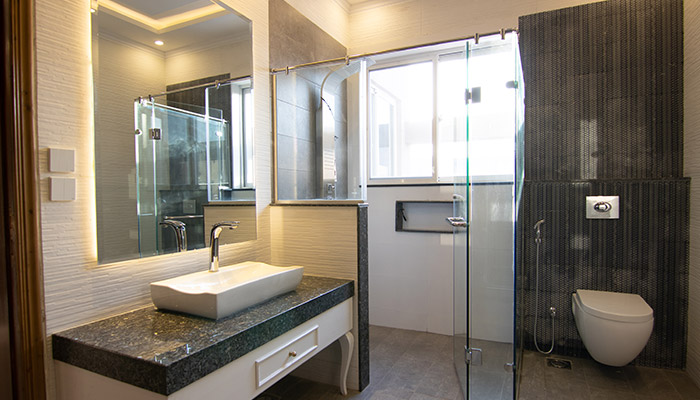
- Empty your medicine cabinet and toss anything expired. Remove those random skincare samples and old razors.
- Get rid of those old cough syrups and crusty mascaras.
- Only put back items that you actually use (store daily items at eye level for easy access).
- Pull all items out of the shower, tub, and vanity. If you’ve got six nearly empty shampoo bottles around the tub, consolidate or trash them. Keep one bottle of each product you use; the rest is just hogging space. Keep a “one in, one out” rule going forward – when you buy a new shampoo, finish or remove an old one.
The Bedroom

- First things first, make your bed. Seriously. An unmade bed makes the whole room look like a hot mess, and you won’t feel like you’re making progress if the bed’s a disaster.
- Remove everything that doesn’t belong on your bedside tables and dressers, including water glasses, old magazines, candy wrappers, rogue charging cords.
- Wipe down the surface so it’s nice and clean. Keep only essentials within arm’s reach (maybe a lamp, current book, and phone charger).
- You know the chair – the chair often hidden beneath a pile of clothing. Time to liberate it! Today marks the end of the habit of leaving clothes strewn across the floor or furniture. Gather up all clothing that’s draped on chairs or strewn on dresser tops.
- Empty out your dresser drawers one by one. Sort clothes into piles: keep, donate, or trash (for those holy socks and shirts beyond saving). Anything you haven’t worn in the last year (or the last six months if you’re really aiming for minimalism) goes to the donate pile.
Learn more: Minimalist Decluttering in 2025: Essential Habits to Adopt
Closet and Clothing
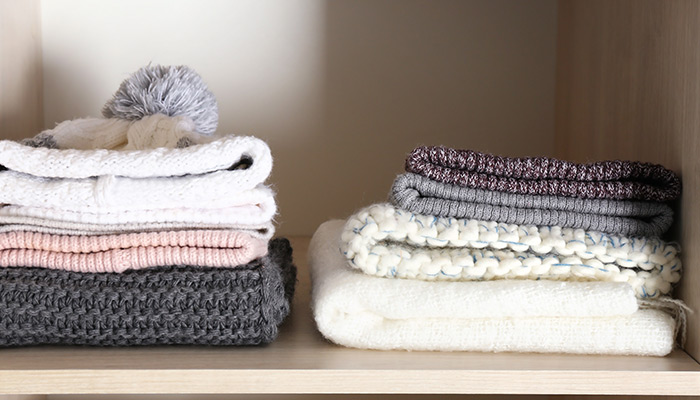
- Instead of randomly yanking things off hangers, declutter your clothing by type. Group similar items and tackle one category at a time: all shirts, all jeans, all shoes, etc. Lay them out on your bed. This method helps you compare and decide what to keep or toss much more easily.
- For each category pile, sort into sub-piles: keep, donate, sell, repair, and trash. Be honest with yourself about what you need and what may be better off in someone else’s hands.
- Organize What’s Left. whittled down to the clothes you love and actually wear! Now, focus on decluttering and organizing by giving items a proper home. Hang alike items together (all pants in one section, blouses in another) or arrange by color.
The Entryway, Mudroom, and Foyer

- Gather up all the shoes that have migrated to the doorway. No more tripping over winter boots in April! Consider a shoe rack or a simple basket for quick storage – even a lined basket can corral flip flops and sneakers neatly.
- If you have an entryway table, console, or some hooks, tackle those next. Empty every drawer and decide to toss or keep each item.
- Set up a designated spot for essentials: a bowl or hook for keys (so you don’t do the frantic key hunt every morning) and maybe a tray for mail or an “inbox” so it doesn’t spread everywhere.
The Kitchen
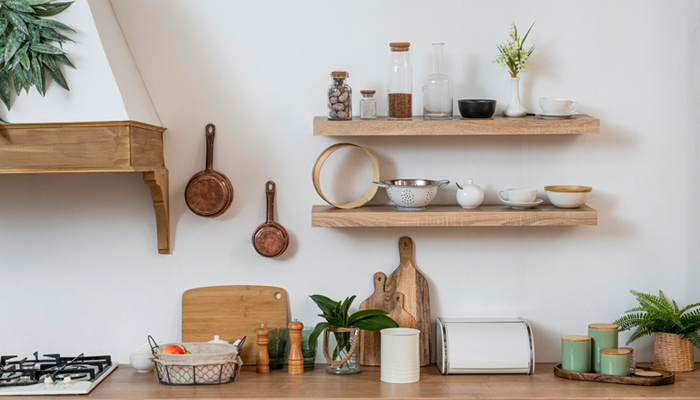
- The kitchen – the heart of the home and often the clutter capital! Kitchens do it all: cooking, eating, family meetings, even homework and mail sorting. The best way to declutter a kitchen is to go step by step and maybe even zone by zone.
- Take everything off the counters that doesn’t belong. What’s left should be only what you use daily – maybe a coffee maker, a toaster, and a fruit bowl.
- Go through your pantry shelves and pull out expired food. We all know it – that cabinet where food containers explode every time you open it. Ensure every container has a matching lid; discard or recycle any unmatched items.
- And now, the infamous junk drawer – every kitchen has one. Dump it out (yes, the whole thing). Sort the bizarre assortment of batteries, rubber bands, old birthday candles, menus, twist ties, etc. Keep a small stock of truly useful things (a few pens, notepad, a mini toolkit or scissors, spare batteries).
The Living Room
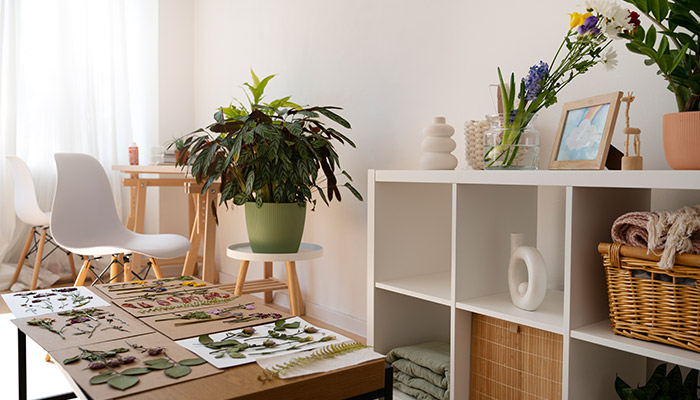
- First, think about the main stuff that lives in your living room – remotes, books, magazines, blankets, toys, electronics, etc. Since living rooms often lack built-in storage, we have to get creative. Decide on permanent storage spots for commonly used items.
- Now tackle the surfaces: coffee table, side tables, entertainment center, bookshelves. Clear them off one at a time. For the coffee table, remove anything that doesn’t belong (old mail, used cups, random odds, and ends).
- Often we stash things and forget about them. Pull out all those DVDs, board games, or old devices – decide what to keep and what can go.
Where to Dispose of Clutter: Quick Guide
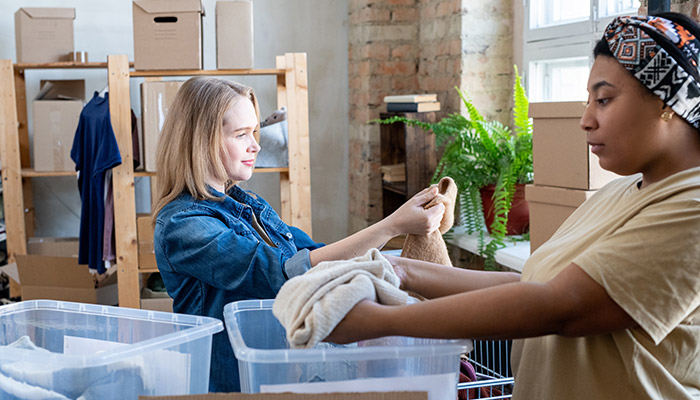
- Goodwill & Salvation Army: Great for donating clothes, furniture, and household items.
- Facebook Marketplace & Craigslist: Sell unwanted stuff online quickly for extra cash.
- Local Shelters & Community Centers: Perfect for gently used clothing and toys.
- Electronics Recycling Centers: Responsibly discard gadgets and e-waste (Best Buy or Staples offer drop-offs).
- Textile Recycling Bins: Convenient for old, worn clothing that can’t be donated.
- Freecycle & Buy Nothing Groups: Easily give away items to your neighbors for free.
- Municipal Bulk Pickups: Your city can often pick up large items like old mattresses or appliances.
- Still have items you love but no space at home: Clutter’s got your back! Store your sentimental items, seasonal gear, extra furniture, or anything else you’re not ready to part with, without lifting a finger. Clutter picks up, safely stores, and returns your belongings whenever you want them. Your space stays fresh, clean, and clutter-free!
Need Extra Space? Discover Our Flexible Storage Solutions!
Conclusion
Decluttering your house does not have to be daunting. By using simple, room-by-room decluttering tips, you can easily regain control of your space. To effectively declutter your house, the most important thing is to have clear guidelines, regularly purge unwanted items, and group similar things together. Adopt these habits and maintain them in order to guarantee long-term organization.
If parting with sentimental items is tough, consider using Clutter—we’ll pick up, securely store, and deliver your belongings whenever you need them—adopting routine home decluttering results in a serene, stress-free home, giving you more energy and joy and less disorder. Declutter and get organized. Now is the ideal time!
FAQs for How to Declutter Your Home
1. What is the 20/20 decluttering rule, and how can it help declutter my house?
The 20/20 rule is a smart, stress-free approach to decluttering your home: if you can replace something for under $20 in less than 20 minutes, it’s safe to let go of. It helps avoid decision fatigue, making home decluttering quick and less overwhelming. It’s one of the best decluttering tips for tackling those small “just-in-case” items.
2. What’s the easiest way to start decluttering my home?
The simplest first step for decluttering your home is to start small. Pick one tiny area, like a junk drawer or a bathroom shelf, and clear it completely. Sort items into three piles: keep, toss, and donate. Small victories create momentum, making it easier to declutter and organize larger spaces later.
3. What’s the Core 4 Method, and how can I use it for decluttering my home?
The Core 4 Method is an easy-to-follow declutter plan that helps organize any space into four clear categories: trash, donate/sell, relocate, and keep. Simply gather clutter from an area and sort it quickly into these categories. It’s one of the most efficient steps to declutter your home and quickly regain control of your space.
4. When decluttering your home, what items should you get rid of first?
Always start by getting rid of trash and broken items first. Old receipts, expired products, and damaged goods are clutter without question. Clearing obvious trash first instantly reduces visual clutter and motivates you to continue your home decluttering journey. After that, move on to duplicates and items you haven’t used in over a year.
5. Is hiring a professional organizer worth it for decluttering my house?
Hiring a professional organizer can definitely be worth it if you’re overwhelmed by the thought of how to declutter your house alone. Professionals bring structure, fresh decluttering ideas, and hands-on help, making the process faster and stress-free. But remember, if your budget is tight, following online guides and simple decluttering tips can also be highly effective in helping you declutter and organize on your own.


